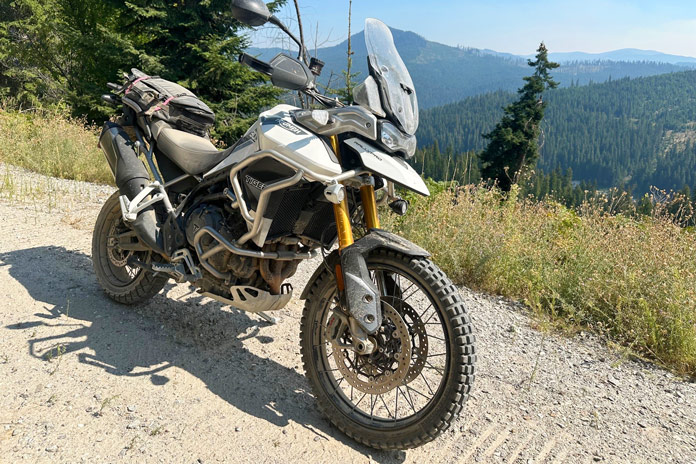
ridermagazine.com
Continental TKC80 and TKC70 Rocks Motorcycle Tires Review
I’m lucky to live in adventure bike heaven, with five (soon to be six, when Montana is released next year) Backcountry Discovery Routes accessible within a day’s ride and innumerable gravel and dirt forest service roads crisscrossing the landscape for hundreds of miles in every direction. The Idaho BDR, for example, is more than 1,200 miles long, and when you factor in the pavement miles required to get there and back, it’s been known to easily chew through a rear big-block knobby tire.
Enter the “mullet” setup, a term coined by mountain bikers that I’ve co-opted to describe a combination of an aggressive, off-road-oriented front tire and a longer-wearing, less aggressive but still capable rear. In a happy twist of fate, Continental recently announced the return of its legendary big-block knobby TKC80 after a nearly three-year hiatus, with a new manufacturing process that Continental says results in an overall higher-quality tire that performs better in wet conditions and holds up better to the demands of aggressive off-road riding.
Continental suggested we test the new TKC80 paired with an open-block TKC70 Rocks rear, which they’ve positioned as a 50/50 tire midway between the standard TKC70 and the TKC80. Plans for long, multiday ADV rides immediately began dancing in my head.
And ride I did. Over two months of testing I’ve put 2,200 miles (and counting) on the TKCs, including city commutes, long slabs of highway, twisty mountain roads, gravel, hard-packed dirt, suspension-testing rocky climbs and descents, ruts, light mud, and loose rocks. I can confidently say I’m impressed.
Continental said the TKC80 front/TKC70 Rocks rear combo would deliver 70% of what a full set of TKC80s could do off-road, but for the type of terrain I ride it feels more like 90%. Aired down to about 25 psi front and 29 psi rear, the TKC mullet combo is compliant and extremely capable. The TKC70 Rocks, despite its mild-mannered appearance, grips sketchy features like side slopes and loose rock tenaciously. Surprisingly, where I feel happiest to have the knobby TKC80 front is on loose gravel, where its bite provides confidence on a fully loaded ADV bike, especially on downhill switchbacks.
The other half of the story, of course, is pavement performance and longevity, and my positive impression holds true. While I have yet to encounter hard, driving rain, there have been some slick, wet mountain roads, and with a dose of reason and smooth braking I don’t notice the TKC80’s knobs at all. On dry roads I get downright sporty, pushing to the outer limits of the tread both front and rear with nary a twitch. These aren’t sport tires, but I’ve pushed them harder than my riding companions were willing to go, and the refrain repeating inside my helmet is always, Wow, these tires are good.
See all of Rider‘s tire reviews here.
After all that abuse – punishing rocks, canyon carving, and plenty of highway slabbing – the center blocks on both tires are just starting to round a bit, but they’re showing no measurable wear by my not-so-technical method of a toothpick and a pen, and the TKC70 Rocks rear is not squaring off yet. It’s worth noting that I’m careful to always air back up after off-road excursions, which certainly helps with longevity. It will be interesting to see how many miles I can get out of the combo, but it’s clear it will outlast a full TKC80 set with little compromise off-road and certainly better pavement performance to boot. See your dealer, online retailer, or Continental’s website for available sizes and pricing.
Shop for Continental TKC80 Tires
Shop for Continental TKC70 Rocks Tires
The post Continental TKC80 and TKC70 Rocks Motorcycle Tires Review appeared first on Rider Magazine.










